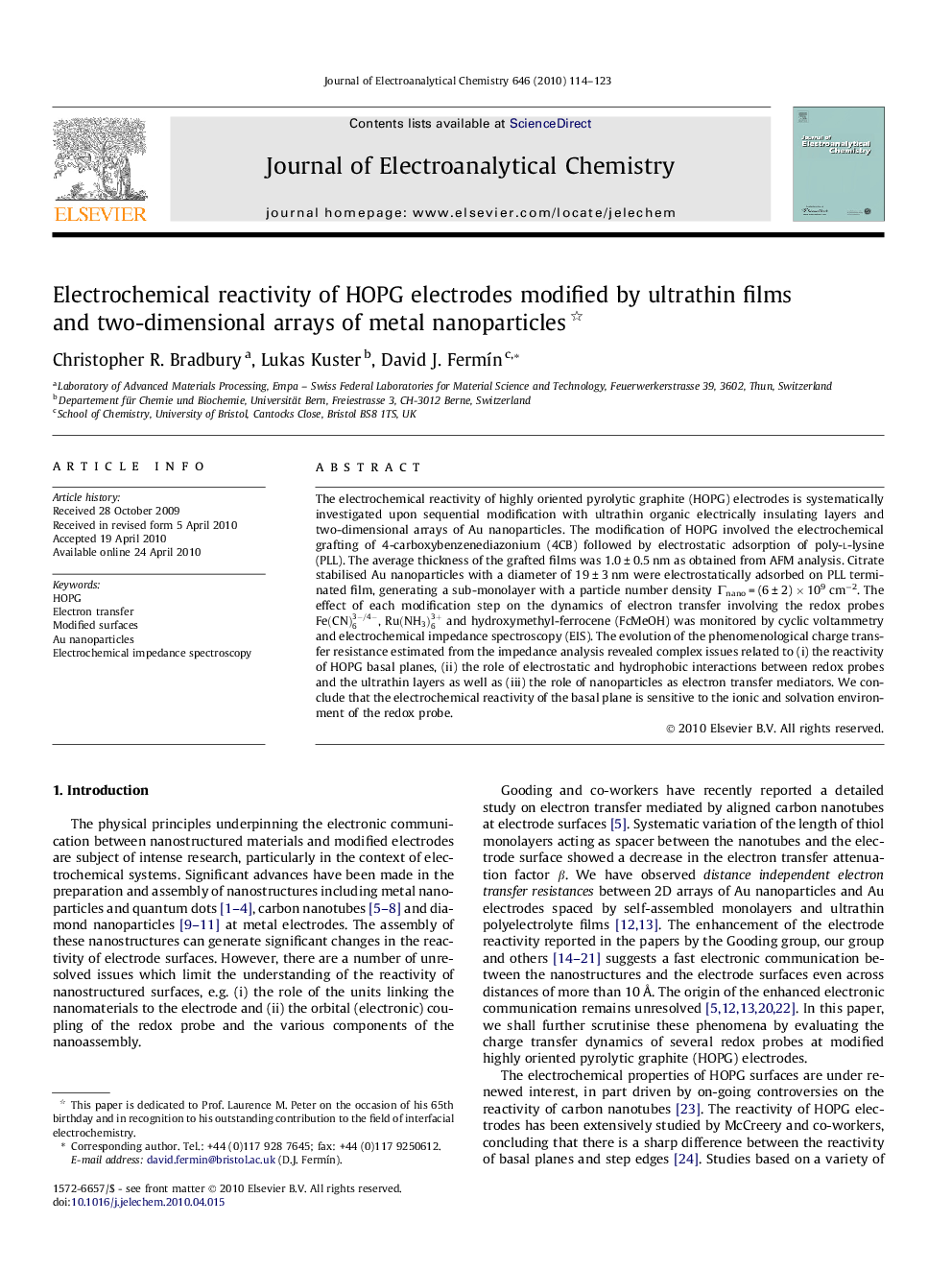| Article ID | Journal | Published Year | Pages | File Type |
|---|---|---|---|---|
| 219828 | Journal of Electroanalytical Chemistry | 2010 | 10 Pages |
The electrochemical reactivity of highly oriented pyrolytic graphite (HOPG) electrodes is systematically investigated upon sequential modification with ultrathin organic electrically insulating layers and two-dimensional arrays of Au nanoparticles. The modification of HOPG involved the electrochemical grafting of 4-carboxybenzenediazonium (4CB) followed by electrostatic adsorption of poly-l-lysine (PLL). The average thickness of the grafted films was 1.0 ± 0.5 nm as obtained from AFM analysis. Citrate stabilised Au nanoparticles with a diameter of 19 ± 3 nm were electrostatically adsorbed on PLL terminated film, generating a sub-monolayer with a particle number density Γnano = (6 ± 2) × 109 cm−2. The effect of each modification step on the dynamics of electron transfer involving the redox probes Fe(CN)63-/4-, Ru(NH3)63+ and hydroxymethyl-ferrocene (FcMeOH) was monitored by cyclic voltammetry and electrochemical impedance spectroscopy (EIS). The evolution of the phenomenological charge transfer resistance estimated from the impedance analysis revealed complex issues related to (i) the reactivity of HOPG basal planes, (ii) the role of electrostatic and hydrophobic interactions between redox probes and the ultrathin layers as well as (iii) the role of nanoparticles as electron transfer mediators. We conclude that the electrochemical reactivity of the basal plane is sensitive to the ionic and solvation environment of the redox probe.
